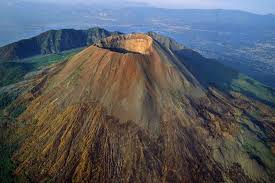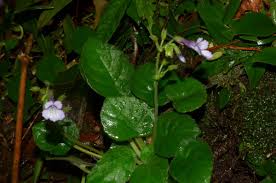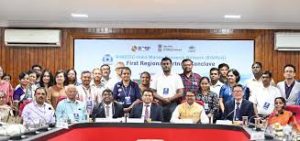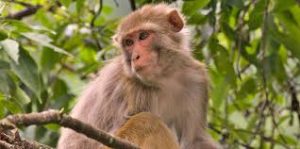Today’s Current Affairs: 10th November 2025 for UPSC IAS exams, State PSC exams, SSC CGL, State SSC, RRB, Railways, Banking Exam & IBPS, etc
Table of Contents
Piprahwa Relics:

A portion of the holy Piprahwa Relics of Lord Buddha, brought from India, were on Saturday enshrined at Thimpu’s prominent monastery, Tashichhodzong, considered the seat of Bhutan’s highest spiritual and political institutions.
- The Piprahwa Relics are a collection of sacred artifacts discovered in 1898 at the Piprahwa Stupa in Uttar Pradesh,
- It is the site believed to be associated with ancient Kapilavastu, the homeland of Gautama Buddha.
- These relics are of immense archaeological and religious importance, as they are believed to be associated with Lord Buddha himself.
- These relics, unearthed by British colonial engineer William Claxton Peppé in 1898, include bone fragments believed to be those of Lord Buddha, along with crystal caskets, gold ornaments, gemstones, and a sandstone coffer.
- An inscription in Brahmi script on one of the caskets links the relics directly to the Sakya clan, to which Buddha belonged, indicating that these remains were enshrined by his followers around the third century BC.
- The British crown claimed Peppé’s find under the 1878 Indian Treasure Trove Act, with the bones and ash presented to the Buddhist monarch King Chulalongkorn of Siam.
- Most of the 1,800 gems went to what is now the Indian Museum in Kolkata, while Peppé was permitted to retain approximately a fifth of them.
- Piprahwa Relics are classified as ‘AA’ antiquities under Indian law, prohibiting their removal or sale.
- Further excavations by the Archaeological Survey of India between 1971 and 1977 uncovered additional steatite caskets containing 22 sacred bone relics, which are now preserved at the National Museum in New Delhi.
- A part of the Piprahwa Relics was passed down for generations in the Peppé family.
- These were put up for auction in Hong Kong in May 2025.
- However, it was successfully repatriated back to India through a public-private collaboration between the Government and the Godrej Industries Group.
Mount Vesuvius:

A mechanical artwork created in 1775 to portray the eruption of Italy’s Mount Vesuvius has been recently brought to life for the first time.
- Mount Vesuvius is an active volcano located on the west coast of Italy near Naples, in the Gulf of Naples.
- It stands about 4,200 feet (1,280 meters) high, but its height changes after each major eruption.
- It is a composite stratovolcano, made up of pyroclastic flows, lava flows, and debris from lahars that accumulated to form the volcanic cone.
- A high ridge known as Mount Somma partly surrounds the main cone of Vesuvius.
- The area between the ridge and the cone is known as Valle del Gigante (Giant’s Valley).
- At the top of the cone is a large crater. It is about 1,000 feet (300 meters) deep and 2,000 feet (600 meters) across.
- As part of the Campanian volcanic arc, it formed over the subduction zone created by the collision of the Eurasian and African tectonic plates.
- This subduction zone stretches the length of the Italian peninsula and is the source of other volcanoes, such as Etna and Stromboli.
- Mount Vesuvius is the only active volcano in mainland Europe.
- Its eruptions typically involve explosive eruptions as well as pyroclastic flows.
- It is one of the most dangerous volcanoes on the planet.
- It is most famous for the 79 AD eruption, which destroyed the Roman cities of Pompeii and Herculaneum.
- The cities were engulfed in pyroclastic flows—superheated, high-density clouds of volcanic gas, ash, and rock that flow downslope at hundreds of kilometers per hour.
- The last major eruption occurred in 1944.
Crassicaulis middletonii:

Scientists from the Botanical Survey of India (BSI) recently discovered a new flowering plant species — Crassicaulis middletonii.
- It is a new species of flowering plant.
- It was discovered in the evergreen forests of Arunachal Pradesh’s West Siang district.
- It marks the first-ever record of the genus Crassicaulis in India, extending its known range by more than 1,200 kilometres westward from China’s Yunnan province.
- It belongs to the Gesneriaceae family (commonly known for ornamental species like African violets).
- It grows up to 30 cm tall and thrives along stream banks near small waterfalls at about 800 metres elevation.
- Its leaf base, white flowers tinged with pink, capsule shape, greenish ovary, and calyx distinguish it from its only known relative, Crassicaulis guiliangii, found in Yunnan.
- It has been assessed as “Critically Endangered” under the IUCN Red List
Kochi hosted the first BIMSTEC-India Marine Research Network:

Kochi hosted the first BIMSTEC-India Marine Research Network (BIMReN) Conference to boost blue economy cooperation.
- BIMSTEC-India Marine Research Network Conference is a biennial regional platform for facilitating collaboration among the researchers in the Bay of Bengal Region, sustainable development of blue economy by networking the researchers in the BIMSTEC Member Countries.
- It was first announced by the Prime Minister of India during the Colombo BIMSTEC Summit in 2022.
- It was launched in 2024 by the Ministry of External Affairs, Government of India.
- BIMSTEC-India Marine Research Network Conference has connected 25 institutions and over 50 researchers from BIMSTEC countries.
- It aligns with India’s broader regional policy objectives under its Neighbourhood First, Act East, Indo-Pacific and MAHASAGAR
- It served as a milestone in advancing regional cooperation in marine research and sustainable blue economy initiatives.
- It focused on marine challenges, ecosystem health, and research innovations, including building scientific networks among young researchers, effective marine resource management and harmonious policy development.
Scintillometer:

A scintillometer was installed at the Tamil Nadu Rice Research Institute (TRRI), Aduthurai, Tamil Nadu.
- It is an optical instrument that measures heat and moisture exchange between the land surface and the
- It operates by transmitting a light beam between two fixed points.
- Minute, rapid fluctuations in the beam caused by turbulent air known as scintillations are analysed to estimate heat transfer from the land to the atmosphere.
- It was installed recently in an existing suite of sensors at the TRRI Critical Zone Observatory (CZO).
- Critical Zone Observatory of Tamil Nadu Rice Research Institute was established under Tamil Nadu Agricultural University (TNAU) with support from the National Centre for Earth Science Studies (NCESS), became fully operational in 2022.
- It is one of three such observatories in India and the only one in Tamil Nadu.
- Main Instruments at about Critical Zone Observatory Site: Automatic Weather Station, COSMOS soil-moisture sensor, pan evaporimeter and eddy-covariance tower.
- The site records weather parameters, soil moisture and direct air–surface fluxes; the scintillometer now provides direct estimates of sensible heat flux.
- These observations improve estimates of evapotranspiration, soil moisture and local microclimate, directly supporting irrigation planning and local forecasts.
- The observatory will generate long-term datasets on meteorological, canopy and hydrological parameters for the Cauvery delta.
- These are crucial for managing water and crops in this climate-sensitive agricultural region.
- It would strengthen climate-resilient decision-making in the Cauvery delta.
The Tribunal Reforms Act, 2021:

The Supreme Court expressed strong displeasure over the Union Government’s repeated adjournment requests in the Tribunal Reforms Act, 2021 case.
- The Tribunals Reforms Act, 2021, enacted on 13 August 2021, seeks to streamline and rationalize tribunals by abolishing several appellate bodies and transferring their functions to High Courts.
- It replaces the Tribunals Reforms Ordinance, 2021, and consolidates provisions governing appointments, tenure, service conditions, and removal of tribunal members.
- Aim is to reduce delay in justice delivery by integrating tribunal functions within the existing judicial structure, To ensure uniformity in appointments and service conditions across tribunals, to enhance administrative efficiency and judicial accountability by limiting executive interference.
- Key Features:
- Abolition of certain tribunals: Eliminates appellate bodies such as the Film Certification Appellate Tribunal, Intellectual Property Appellate Board, and Airport Appellate Tribunal, transferring jurisdiction to High Courts.
- Centralised Appointments: Chairpersons and Members are appointed by the Central Government on the recommendation of a Search-cum-Selection Committee chaired by the CJI or his nominee.
- Tenure and Age Limits:
- Chairperson: 4 years or until 70 years of age.
- Members: 4 years or until 67 years of age.
- Minimum Age: Candidates must be 50 years or older for appointment, excluding younger professionals from consideration.
Four New Lichen Species:

Researchers recently discovered four new lichen species, enhancing biodiversity understanding in the Western Ghats.
- The newly identified species – Parmotrema sahyadricum (discovered from Wayanad), Solenopsora rhizomorpha (from Eravikulam and Mathikettanshola National Parks), Buelloa ghattensis (Mathikettanshola National Park) and Pyxine janakiae (Mathikettanshola National Park) – have been published in international scientific journals.
- The work that started in 2022 resulted in these discoveries.
- The team also recorded more than 50 species of lichens, which are new reports to the Kerala part of the Western Ghats.
- A lichen is a symbiosis between different organisms — a fungus and an algae or cyanobacterium.
- The basis of their relationship is the mutual benefit that they provide each other.
- The photosynthetic algae or cyanobacteria form simple carbohydrates that, when excreted, are absorbed by fungi cells and transformed into a different carbohydrate.
- They also produce vitamins that the fungi need.
- Fungi contribute to the symbiosis by absorbing water vapour from the air and by providing much-needed shade for the light-sensitive algae beneath.
- The composite body of a lichen is called a thallus (plural thalli); the body is anchored to its substrate by hairlike growths called rhizines.
- Lichens are found worldwide and occur in a variety of environmental conditions.
- A diverse group of organisms, they can colonize a wide range of surfaces and are frequently found on tree bark, exposed rock, and as a part of biological soil crust.
- They are a keystone species in many ecosystems.
- They serve as a food source and habitat for many animals, such as deer, birds, and rodents.
- They provide nesting materials for birds.
- They protect trees and rocks from extreme elements such as rain, wind, and snow.
Batten Disease:

Researchers recently have found that male and female brains show different responses as the Batten Disease progresses and have found a model of the disease that could transform future treatments
- It is a very rare genetic disorder that affects the brain and nervous system.
- Batten disease is a congenital, progressive, and terminal neurological disease.
- Symptoms sometimes begin in infancy and sometimes later in childhood, after apparently normal early development.
- Occasionally it may start in adulthood.
- In individuals suffering from Batten disease, nervous system function steadily declines, causing a wide variety of neurologic problems, including loss of vision and seizures.
- The life expectancy of a child born with Batten disease can vary, depending on the form of the disease and the age of onset.
- Some children die in early childhood, while others may be able to live into their teens or twenties.
- Batten disease is actually a family of related disorders also known as neuronal ceroid lipofuscinoses.
- It can be caused by genetic mutations in any of more than a dozen known genes, collectively referred to as CLN genes (CLN1, CLN2, etc).
- There are 13 known forms of Batten disease (CLN1 through CLN14).
- Each form is classified by the specific version of the CLN (ceroid lipofuscinosis, neuronal) gene that causes it, with each numbered subtype referring to a different gene that causes its own respective form of the disease.
- The most common type of Batten disease is CLN3.
- Most forms of Batten disease cause vision loss, seizures, delayed developmental milestones, behavioral and learning problems, and loss of language and motor skills.
- Some children with infantile Batten disease also develop microcephaly.
- Vision loss is often the first symptom and can rapidly progress.
- Parents also often notice clumsiness and stumbling in older children due to a loss of motor coordination.
- Eventually, children with Batten disease become blind, unable to walk, talk, or swallow, and confined to a wheelchair or bed.
- Currently, there is no treatment to reverse the effects of Batten disease.
- But some medications can help improve symptoms like seizure
- Some people with Batten disease get physical or occupational therapy to help them function.
Christmas Island:

Google plans to build a large artificial intelligence data centre on Australia’s remote Indian Ocean outpost of Christmas Island after signing a cloud deal with the Department of Defence earlier this year.
- Christmas Island is an island in the Indian Ocean.
- It lies about 360 km south of the island of Java and 1,400 km northwest of Australia.
- It is administered as an external territory of Australia.
- The island is the summit of an oceanic mountain whose highest point on the island is Murray Hill, rising to 1,184 feet (361 metres) in the western part of the island.
- The main settlement and chief port is at Flying Fish Cove on the northeastern part of the island.
- Although Europeans sighted Christmas Island in 1615, it was named for the day of its rediscovery in 1643.
- The discovery of phosphate on the island in 1887 led to the UK annexing it the following year.
- In 1900 Christmas Island was incorporated in the British crown colony of the Straits Settlements with its capital at Singapore.
- During World War II the island was occupied by the Japanese.
- In 1958 the island became an Australian territory.
- Tropical rainforest covers most of Christmas Island, and fauna includes large numbers of seabirds, small reptiles, land crabs, and insects.
- One of the island’s best-known animal residents is the Christmas Island red crab (Gecarcoidea natalis), whose spectacular annual emergence and migration draws large numbers of tourists.
- The population includes many ethnic Chinese, a small number of people of European ancestry, and Malay labourers recruited mainly from Malaysia, Singapore, and the Cocos (Keeling) Islands.
- The territory’s economy was long based almost entirely on the mining and extraction of phosphate.
- With the recoverable reserves of phosphate nearly exhausted, efforts were turned toward developing tourism.
- Small-scale subsistence cropping and fishing are practiced, but most food is imported.
Rhesus Macaque : Study

The standing committee of the National Board for Wildlife (SC-NBWL) has recommended reinstating Rhesus Macaque species of monkeys under Schedule II of the Wildlife (Protection) Act, 1972.
- The Rhesus macaque (Macaca mulatta) is a species of Old World monkey.
- Rhesus macaques are familiar brown primates with red faces and rears. They have close-cropped hair on their heads, which accentuates their very expressive faces.
- They are native to India, Bangladesh, Pakistan, Nepal, Myanmar, Thailand, Afghanistan, Vietnam, southern China, and some neighboring areas.
- They may be found in forests, mangroves, scrub, grasslands, and mountainous regions.
- They also adapt well to human presence and form larger troops in human-dominated landscapes than in forests.
- Rhesus macaques are omnivorous animals, eating seeds, roots, bark, fruits, and cereals.
- Characteristics of Rhesus macaques:
- Social groups: They live in large groups, often led by a dominant male.
- Lifestyle: These are social, diurnal, and both terrestrial and arboreal animals.
- Communication: They use vocalizations, facial expressions, and body language
- Conservation Status:
- IUCN: Least Concern
- Wildlife Protection Act of 1972: Schedule II.
ReALCRaft Portal:

Government notified rules for “Sustainable Harnessing of Fisheries in the Exclusive Economic Zone” and an Access Pass required for mechanized and large-sized motorized vessels can be obtained through the online ReALCRaft portal.
- The Registration And Licensing of Fishing Craft (ReALCRaft) portal is developed as a national online platform under open source technology.
- It is developed by the Department of Fisheries, Ministry of Fisheries, Animal Husbandry & Dairying
- It provides web-based, citizen-centric services to marine fishers and coastal States/UTs for the registration and licensing of fishing vessels, transfer of ownership, and related processes, thereby promoting ease of doing business.
- Objectives is to develop a modern, comprehensive and transparent vessel data management system in the country with the aim to enhance security features and to bring efficiency, transparency, accountability and reliability in services.
- Features of ReALCRaft Portal:
- Integration with state-specific payment gateway (Bank /treasury),
- Integration with security agencies to record the movements and track the vessels.
- Upstream integration with insurance agencies, subsidy schemems for eDBT.
- Integration with ISRO facilitates real-time communication with fishermen at sea.
- Integration & data sharing with Govt. Agencies/ Security Agencies
- It is also being integrated with Marine Products Export Development Authority (MPEDA) and the Export Inspection Council (EIC) for issuance of Fish Catch and Health Certificates.
India AI Governance Guidelines:

MeitY has released the India AI Governance Guidelines—a national, pro-innovation framework to enable safe, trusted AI adoption across sectors.
- A four-part governance blueprint that balances rapid AI adoption with safety, trust, and accountability—without a heavy, one-size-fits-all law.
- Published by Drafted for the Ministry of Electronics & IT (MeitY) by a committee constituted in July 2025.
- Aim is to Advance Viksit Bharat 2047 goals by democratizing AI benefits while mitigating harms like deepfakes, bias, and security threats through agile, sector-aware governance.
Key features in the guidelines:
- Seven Sutras (principles): Trust; People First; Innovation over Restraint; Fairness & Equity; Accountability; Understandable by Design; Safety, Resilience & Sustainability.
- Six Pillars: Infrastructure; Capacity Building; Policy & Regulation; Risk Mitigation; Accountability; Institutions.
- Action Plan with timelines: Short/medium/long-term steps—standards, incident systems, sandboxes, legal gap-fixes, DPI-AI integration.
- Institutional architecture: AI Governance Group (AIGG), supported by a Technology & Policy Expert Committee (TPEC); AI Safety Institute (AISI) for testing, standards, and safety R&D.
- Pro-innovation, sector-led regulation: Use existing laws; add targeted amendments (e.g., IT Act classifications, copyright/TDM, DPDP rules) rather than an over-arching AI Act now.
- Risk tools: India-specific risk taxonomy, AI incident database, voluntary commitments, techno-legal measures (watermarking/provenance, privacy-enhancing tech, DEPA-style consent for training), human-in-the-loop for loss-of-control risks.
- Accountability levers: Graded liability by role/risk, transparency reports, grievance redressal, peer and auditor oversight.
- Enablement at scale: Compute/data access (AIKosh, subsidised GPUs), DPI-first solutions, MSME incentives and toolkits.
2025 Nobel Prize in Physiology or Medicine:
The 2025 Nobel Prize in Physiology or Medicine has been awarded for discoveries concerning peripheral immune tolerance. This recognition once again places immunology at the heart of modern biomedical science and public health – an area increasingly relevant for India’s healthcare and research landscape.Immunology is the branch of biomedical science that studies the body’s immune system – its organs, cells, and molecules that protect against infection, disease, and foreign substances. It explores how the immune system identifies and neutralizes pathogens such as viruses, bacteria, and parasites.It also examines how this system sometimes malfunctions, leading to autoimmune diseases, allergies, cancers, or organ transplant rejections.
Kazakhstan Poised to Join Abraham Accords:
US President Donald Trump announced that Kazakhstan will join the Abraham Accords, expanding the framework that normalises relations between Israel and Muslim-majority nations.The Abraham Accords are US–brokered agreements (2020) that normalised ties between Israel and several Arab/Muslim-majority countries. The accords are named after the biblical figure Abraham, considered a common ancestor of Jews and Arabs, symbolizing brotherhood. The key signatories to the Abraham Accords include Israel, UAE, Bahrain, and Morocco (all in 2020), and Sudan (2021).
Mussels as Bioindicators:
Mussels are being used as bioindicators to monitor microplastic and chemical pollution in the Saronic Gulf of Greece. Mussels are bivalve mollusks ( shell-bearing invertebrates with two hinged shells). They are found in both marine (family Mytilidae) and freshwater (family Unionidae) environments.
They occur worldwide, especially in cooler seas, and are an important component of coastal biodiversity.Mussels are used as bioindicators because they are sessile, filter-feeding organisms that accumulate contaminants like heavy metals, microplastics, and other pollutants in their tissues, providing a record of water quality over time. Their wide distribution and ability to reflect the presence of pollutants make them valuable for monitoring both freshwater and marine environments for pollution, including chemical and biological hazards.
UNESCO Adopts Global Standards on Neurotechnology:
UNESCO has adopted the world’s first global ethical standards on neurotechnology, addressing privacy, human rights, and data protection amid the rapid rise of AI-driven brain–computer interfaces.An international framework issued by UNESCO (United Nations Educational, Scientific and Cultural Organization) to guide the ethical development, use, and governance of neurotechnology—devices and systems that record, interpret, or influence brain and nervous system activity.
The Tropical Forests Forever Facility (TFFF) Initiative:
At COP30 in Belém, Brazil, India joined the Tropical Forests Forever Facility (TFFF) as an Observer, welcoming it as a major step in global efforts to conserve tropical forests through innovative, market-driven finance. The TFFF is a blended-finance mechanism aimed at incentivising countries to prevent deforestation and degradation of tropical forests by providing results-based payments funded through investment returns rather than traditional aid. First proposed by Brazil during COP28 (Dubai, 2023) and formally launched at COP30 (Belém, Brazil, 2025). Origin: A Global South-led initiative spearheaded by Brazil in coordination with other tropical forest nations such as Colombia, Ghana, Indonesia, Malaysia, and the Democratic Republic of Congo, with support from partner countries like Germany, France, UAE, Norway, and the UK. Aim is to create a permanent, self-sustaining global fund that monetises the ecological value of tropical forests—ensuring that “standing forests are worth more than felled ones”—while strengthening multilateral climate cooperation and equity in global finance.




